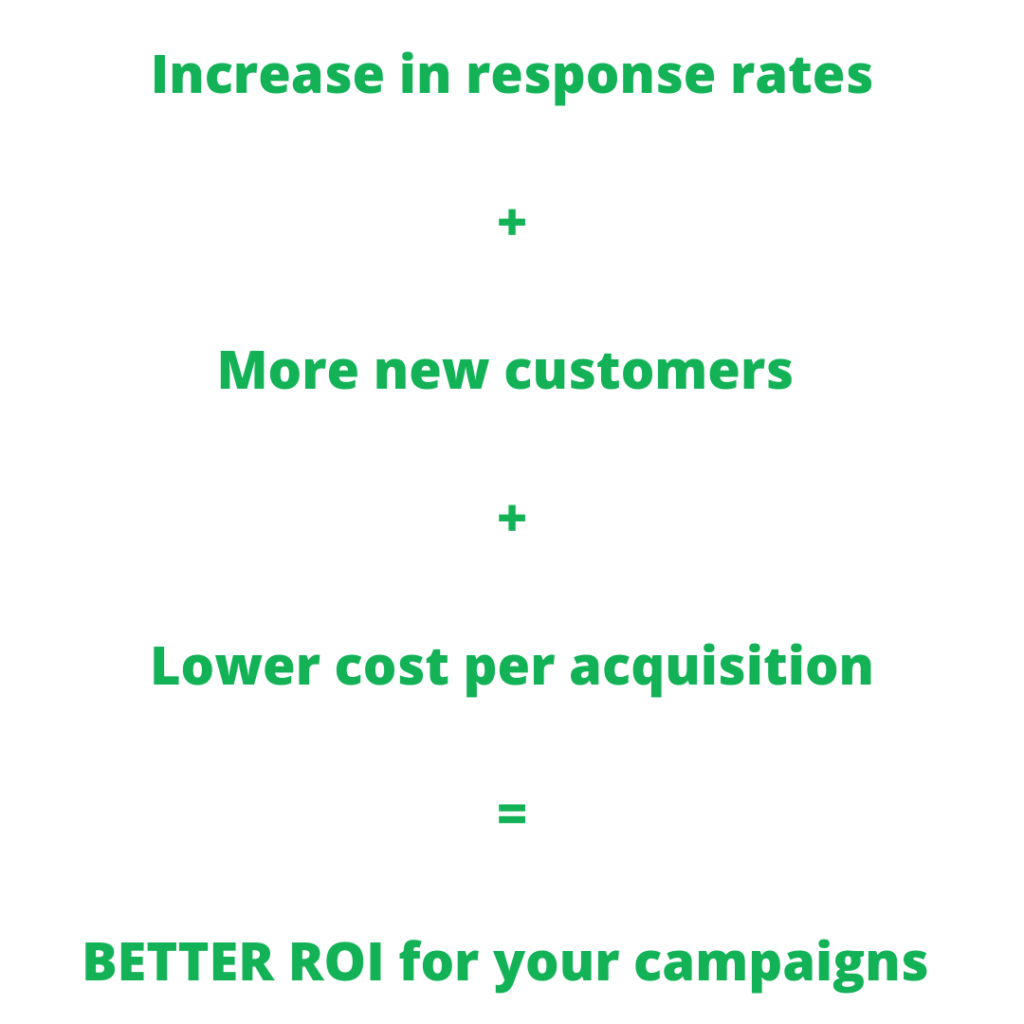Author: Mike Dietz, Executive Creative Director and Laura Karels, Lead Designer
Ultimately, the goal of any direct mail piece is to pique a consumer’s interest, but also leave them wanting more. This is where informed creative comes into play.
When a piece of mail is in a consumer’s mailbox, there are two steps that need to be taken to achieve the desired outcome. First, it must garner the attention of the consumer to be opened. Once that occurs, it needs to convince the consumer to take action, whether that’s a phone call, typing in a unique URL, or scanning a QR code.
Getting the consumer to the point of taking action requires thoughtful strategy behind the design and copy of the piece – allowing the data to inform influence the creative strategy.
Knowing your audience means being able to resonate with them better. But the only way to do that is to know your data.
Subtle Changes Can Make Big Differences
Every target demographic is different, so why wouldn’t your direct mail reflect that? Writing for different target audiences require a good amount of nuance. This is when having a strong copywriter who knows how to add in those subtle changes that make all the difference for who you’re speaking to.
Let’s say you’re an insurance company and you want to reach those of retiring age as well as those who are just starting their families, that’s people in two wildly different life stages. While the entire structure and copy doesn’t need to change, reordering the bulleted benefits in a way that puts the most important to them first is a way to capture attention. The retired couple might not be looking for the same elements of a health insurance plan as a young family with three children.
The same goes for imagery. While you don’t need hundreds of image options, having a few that reflect who you’re sending to is helpful. You’re more likely to open something that looks like you.
Understand Your Consumer’s Barriers
Another important aspect to know about your audience is what might keep them from taking action. Identifying potential barriers is key. Once identified, address it in the copy right away. Going back to the insurance example, some people might not want to switch insurances because they think it will be too complicated and you’ve lost them before they even read the offer. By stating that the insurance company will eliminate all the pain of switching, you’ve helped overcome their hesitations.
Move the Needle
Ultimately, figuring out what elements will move the needle for your consumer are what’s most important. And you guessed it, infusing data into your creative strategy provides you with the best opportunity for success. At Nahan, our Designers work seamlessly with our Data and Strategy teams to develop informed creative that gets the job done.
A Guide to Direct Mail Testing Today

Testing is a key component of any successful direct marketing program. The most impactful direct mail marketers are constantly testing creative, lists, and offers, which enables them to make marketing decisions armed with more insight.
We have found that testing means different things to different people. Clients approach it in a variety of ways.
In this white paper, we provide an insiders guide to effective direct mail testing for programs of all sizes and across industries. It doesn’t matter if you’re just getting started with testing or a seasoned pro, our guide will provide you with actionable insights you can implement today.
Learn how the four phases of the testing process work together to drive optimization.
- Research
- Pre-Testing
- Testing
- Post-Campaign Assessment
If you’re ready to test smarter and drive ROI for your program, fill out the form below for the full guide to direct mail testing today!















